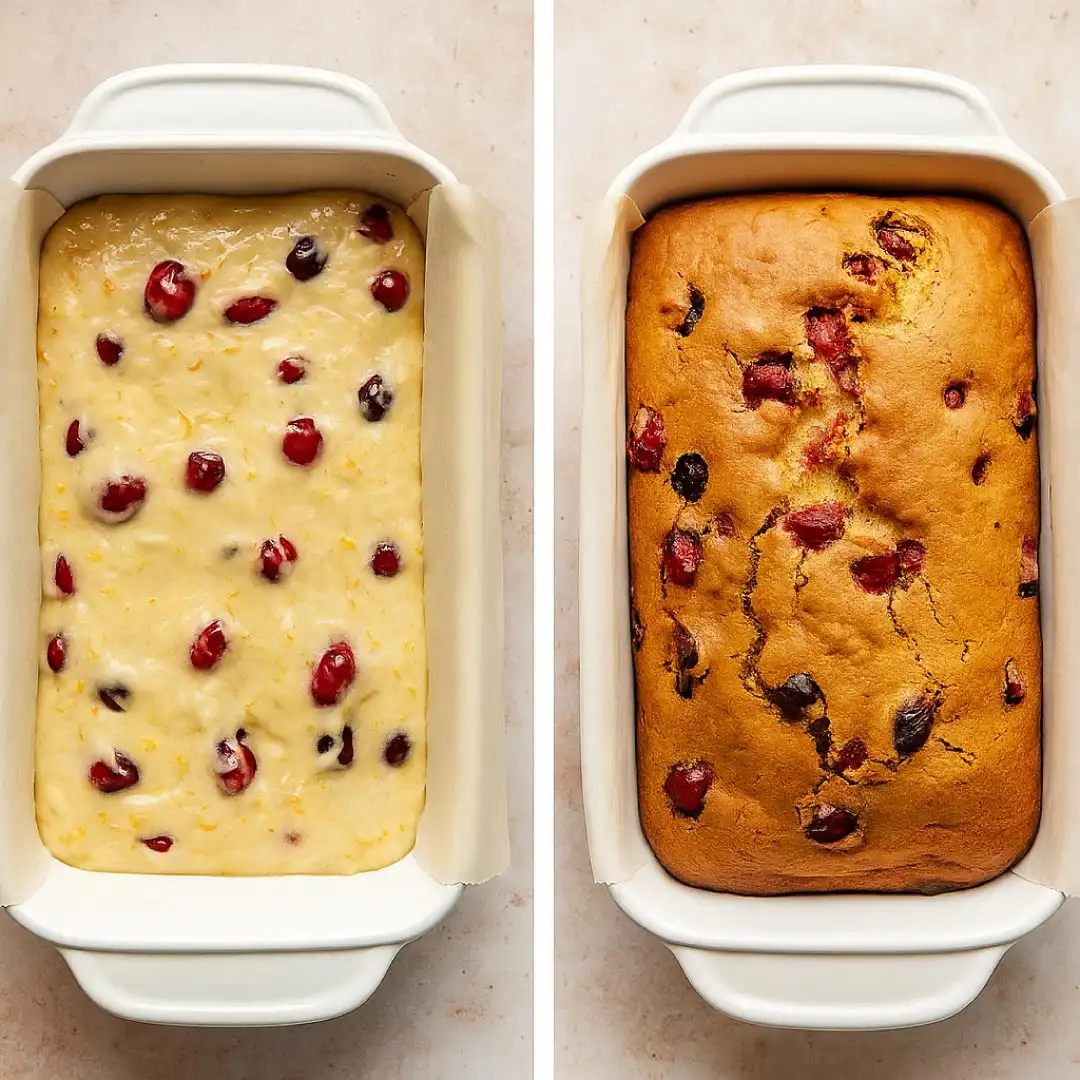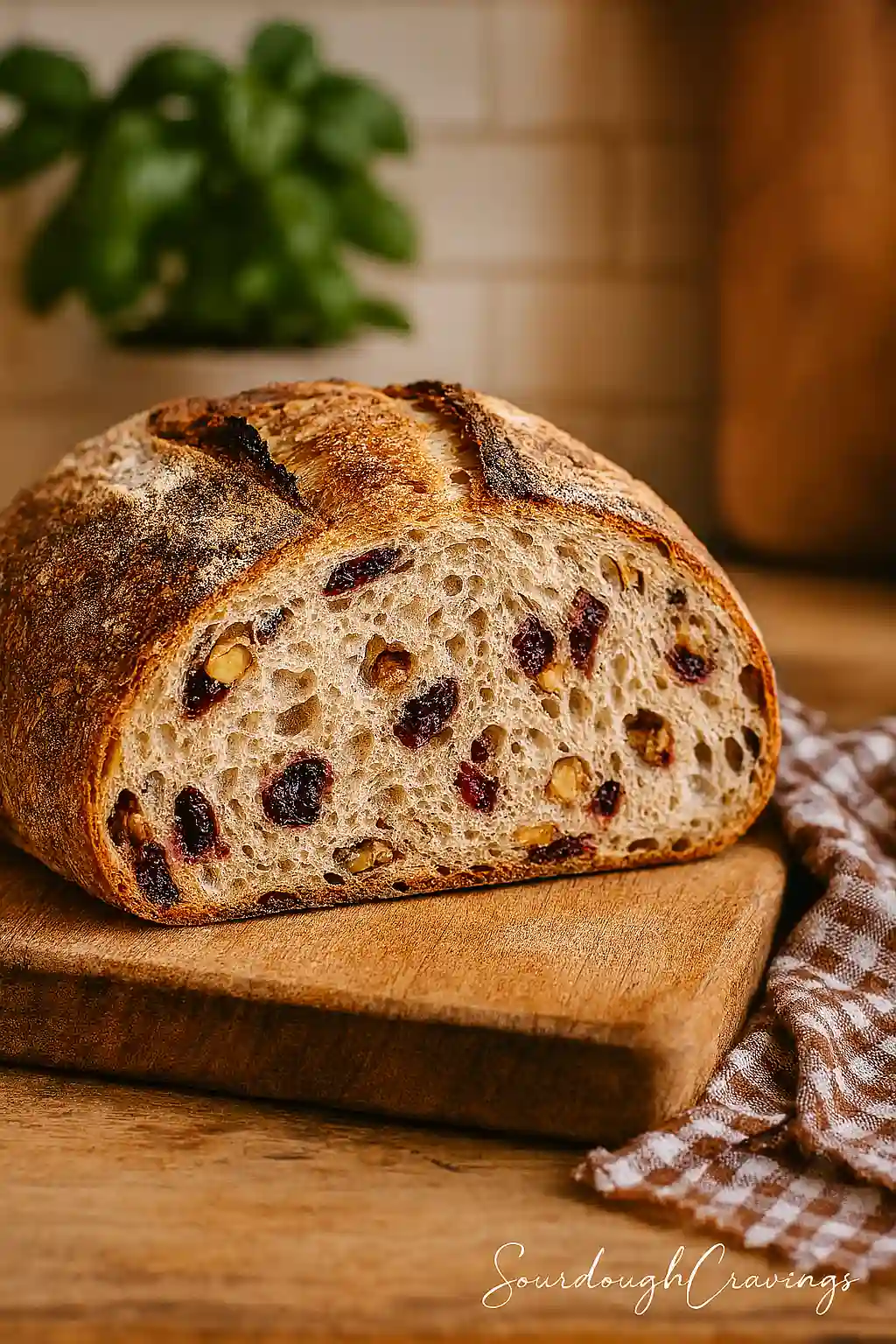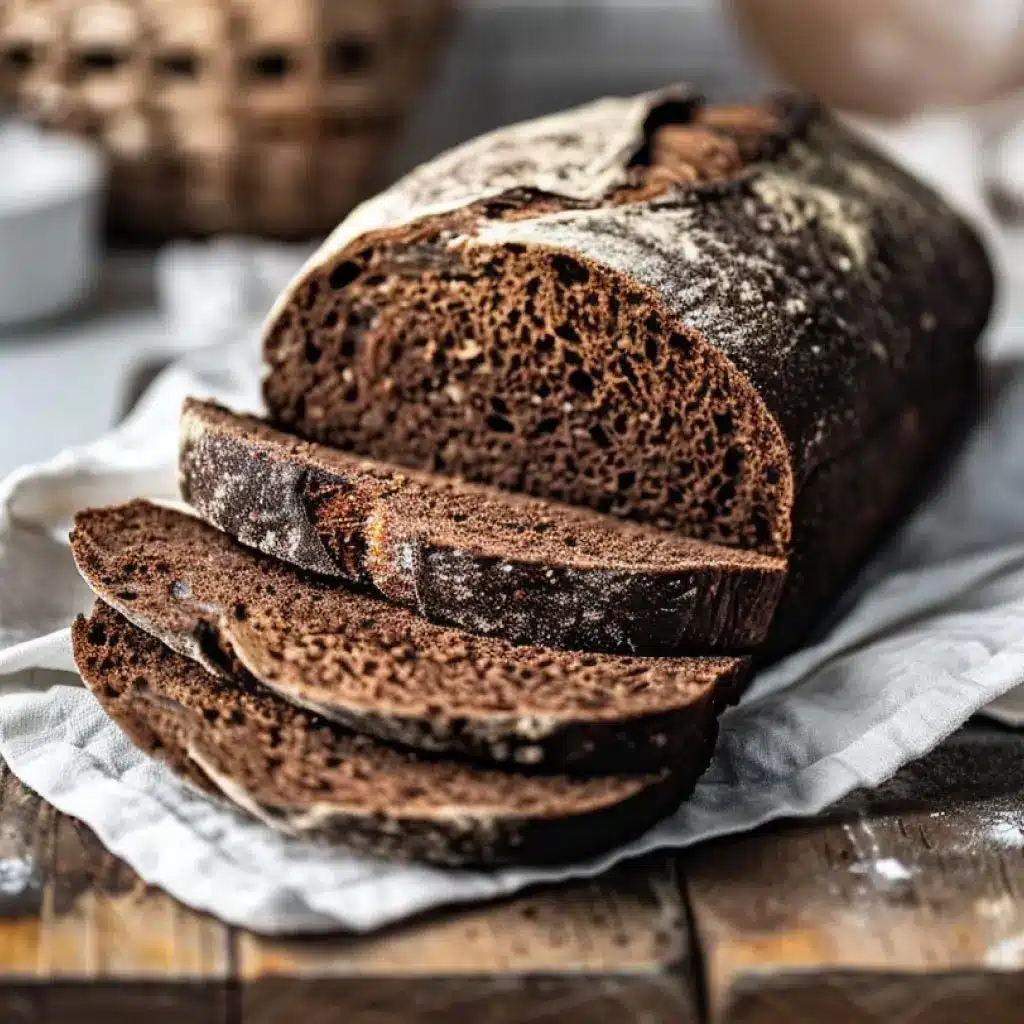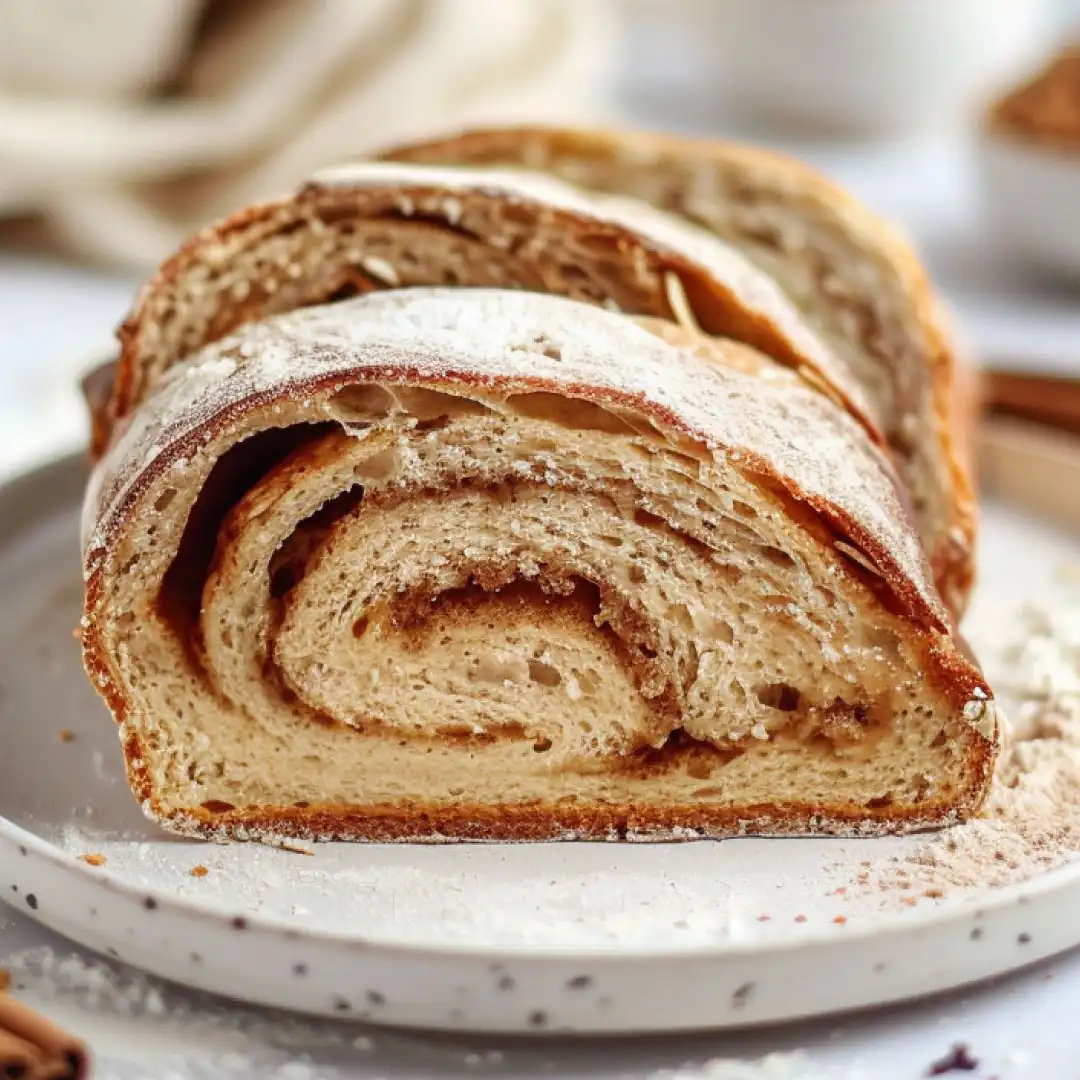Sourdough discard was one of the most confusing parts of my baking journey. In the early days, I followed every starter tutorial I could find, but no one really explained what to do with the portion you remove before feeding. I was left with a growing jar of extra starter and no clear direction.
At first, I threw it away—every day. A few scoops into the trash, and that was it. But the more I baked, the more it bothered me. Was I wasting something useful? Was this step even necessary?
Like many home bakers, I didn’t realize that the extra starter—your discard—is more than just leftovers. It can be stored, reused, and even become a flavorful part of your weekly cooking. Once I learned how to manage it, everything about my sourdough routine got easier.
In this guide, you’ll get a clear look at what discard actually is, how to store it, when it’s still usable, and how to make it part of your baking rhythm without the guilt or waste. Whether you’re just getting started or trying to simplify your kitchen habits, this is the place to build confidence.
Let’s demystify sourdough discard—and turn that “extra” into something worth saving.
What sourdough discard actually is (and isn’t)
The real reason we discard
Sourdough discard is simply the portion of your sourdough starter that’s removed before you feed it. That’s all. There’s nothing spoiled, rotten, or wrong about it. It’s unfed starter—flour, water, and wild yeast that hasn’t had a fresh meal yet.
We discard to keep our starter small and manageable. Without that step, it would grow exponentially with every feeding, and soon you’d have a gallon of starter in your fridge… and a very confused family asking why the oatmeal shelf smells like vinegar.
This step—removing a portion before feeding—isn’t optional. It’s essential for maintaining a healthy, balanced culture. If you’re wondering why this happens or whether it’s avoidable, the short answer is: not really. But there are ways to reduce how much you discard, and we’ll get to that in your routine.
The difference between starter and discard
It’s easy to mix them up. Both look the same. Both are made from the same ingredients. But your starter is the active culture you feed regularly. Your discard is what you remove and choose not to feed—at least not right away.
If you’ve ever been unsure about this, or found yourself Googling “starter vs discard,” you’re not alone. This exact question comes up constantly with new bakers who are just learning how sourdough works. We’ll dive deeper into that subtle (but important) difference here: Discard vs Starter: What’s the Difference? (Coming Soon)
Is sourdough discard still alive?
Yes. In many cases, it still contains wild yeast and beneficial bacteria. It’s just not freshly fed, which means it’s less bubbly, slower to rise, and often a bit more acidic. That acidity gives it a sour flavor that works beautifully in recipes like crackers, waffles, and flatbreads.
Over time, especially if left at room temperature, the wild yeast in sourdough discard becomes dormant. But it’s not harmful—it just means it’s better suited for flavor rather than leavening. That’s why most discard recipes don’t rely on it to rise dough, but rather to bring that unmistakable tang.
Should you really throw it away?
The name makes it sound like you should toss it. But sourdough discard can be baked with, saved for later, frozen, composted, or even turned into garden fertilizer. If the jar in your fridge is building up faster than you can bake, and you’re not sure how much to keep, this guide on how much discard to keep and throw away (Coming Soon) can help you set up a realistic system.
The truth? Discard is only waste if you let it be. Once you understand what it is and how to work with it, you might even start looking forward to it.
Understanding the science of discard
What’s really in sourdough discard?
Behind the sour tang and occasional fizz, sourdough discard holds a living community of wild yeast and bacteria. Even after sitting in the fridge for days, it’s not just “leftover”—it’s a live, acidic mix full of potential.
Your discard still contains:
- Wild yeast (though likely less active)
- Lactic acid bacteria
- Acetic acid (that sharp vinegar note)
- Organic acids and alcohol (which can turn into hooch)
These components develop through natural fermentation, especially when your discard is left unfed. Over time, it becomes more acidic and less bubbly—but in many recipes, that punch of flavor is exactly what you want.
What is hooch—and is it normal?
That murky, sometimes gray or brown liquid that forms on top of your discard? That’s called hooch. It’s a natural byproduct of hungry yeast creating alcohol when it runs out of food.
You might notice your sourdough discard starts to smell like nail polish remover or booze—that’s ethyl acetate, and it’s part of the fermentation process. It doesn’t mean the discard is bad. In most cases, you can stir it back in or pour it off depending on what you’re baking.
For more detail on what hooch really is, how to tell if it’s safe, and when to get rid of it, check out this guide: What Is Sourdough Hooch? (Coming Soon). And if your discard consistently develops a thick layer of hooch or starts smelling off, How to Get Rid of Discard Hooch (Coming Soon) walks you through how to adjust your storage routine.
What if it smells strong—or just plain weird?
The aroma of sourdough discard can vary depending on how old it is. Fresh discard may smell pleasantly tangy, but older discard can develop sharp, acidic, or even nail polish-like smells. These aren’t always bad signs, but they do signal changes in the yeast and bacteria balance.
If you’re unsure whether your discard has crossed the line from funky to foul, Why Does Discard Smell? breaks down the most common odors and what they mean. And if your starter ever smells strongly like alcohol, Why Your Starter Smells Like Alcohol (Coming Soon) explains what’s happening and how to fix it.
What about mold and spoilage?
There’s a difference between hooch and something more concerning. If you see pink, orange, green, or fuzzy growth, it’s time to toss the jar. Mold means the ecosystem in your discard has tipped too far out of balance.
If you’re seeing signs like separation, sludge, or odd textures, our step-by-step breakdown on Troubleshooting Discard: Mold & Hooch (Coming Soon) can help you figure out what’s normal and what’s not.
In rare cases, discard can spoil—but it’s not common if you’re storing it well. If you’ve got something that looks suspicious, How to Fix a Sourdough Starter with Mold (Coming Soon) walks through when to save it, when to start over, and how to avoid it next time.
The complete guide to storing sourdough discard
Where should you keep sourdough discard?
Once you start saving sourdough discard, the biggest question is where to keep it. Should it stay on the counter, go in the fridge, or head straight to the freezer?
If you’re planning to use your sourdough discard later that same day, the counter is fine. You can let it sit at room temperature for a few hours without any issues. But for anything longer, storing sourdough discard in the refrigerator is the way to go. The cold slows down fermentation and helps keep your discard from turning too acidic, too quickly.
Now, if your sourdough discard is piling up and you’re not baking with it fast enough, freezing is your best option. Just portion it out into small jars or silicone molds, label the containers, and freeze. When you’re ready to use it, let it thaw overnight in the fridge or defrost gently at room temperature. If you’re deciding between the two options, this breakdown on Refrigerator vs Freezer: Best Discard Storage (Coming Soon) can help clarify what works best based on your baking habits.
Need more step-by-step help with containers and storage timelines? See the full breakdown in How to Store Sourdough Discard (Coming Soon).
Choosing the right container
Airtight containers might seem like the obvious choice, but when it comes to storing sourdough discard, a little breathing room is helpful. Fermentation can still occur, especially in the first day or two after you tuck it in the fridge.
I prefer glass jars with loose lids, wide-mouth mason jars, or BPA-free containers with a snap-lock top—left slightly unsealed. And always, always label the date. It’s incredibly easy to lose track of when each jar was saved. If you want more container recommendations, Best Containers for Discard Storage (Coming Soon) walks you through your best options for different kitchen setups.
How long sourdough discard actually lasts
In the fridge, sourdough discard usually lasts 7 to 14 days. It may separate or develop hooch (a layer of liquid on top), but that doesn’t mean it’s bad. Just stir it in, smell it, and go from there. Discard that’s too old may smell sharp, cheesy, or downright funky—and that’s your cue to let it go.
In the freezer, sourdough discard lasts even longer. I’ve used frozen discard after 3 months with no problem, but try to use it within 3–6 months for best results. For a full timeline and how to tell when discard is past its prime, check out Sourdough Discard Shelf Life: How Long It Lasts (Coming Soon).
When it’s time to toss
Sometimes discard really does go bad. If your sourdough discard smells like rot, has streaks of pink or orange, or shows any fuzzy mold, it’s not worth saving. These are clear signs that the balance of bacteria and yeast has broken down.
And if you’re still not sure whether to keep or toss it, Can Discard Go Bad? Signs and Safety Tips (Coming Soon) gives you a simple checklist to help you decide.
At the end of the day, sourdough discard is a powerful ingredient—but only when it’s fresh enough to be safe and tasty. When in doubt, trust your nose.
Reusing discard without overthinking it
One of the biggest mistakes I made early on was assuming I needed a fancy, long-fermented recipe to use my sourdough discard. The truth? Some of the best uses are the simplest.
Think of sourdough discard as flavor more than function. It probably won’t give you much rise on its own, especially if it’s been sitting in the fridge for a few days, but it will bring a gorgeous tang, depth, and moisture to baked goods that don’t need much structure.
I keep a jar in the fridge just for discard baking. When I’m short on time or low on energy (which, let’s be honest, is often), I reach for that jar to whip up pancakes, crackers, muffins, or even a quick flatbread for dinner.
Some days I toss a spoonful into waffle batter for extra crisp edges. Other times I build a discard-based dough for something a little more substantial, like pizza crust. If you’re not sure how to incorporate it into what you’re already making, How to Use Sourdough Starter Discard (Coming Soon) breaks down recipe types and how much to swap in.
You can use sourdough discard straight from the fridge—it doesn’t need to be room temperature unless your recipe is very sensitive to temperature or you’re trying to revive some activity in older discard.
How much discard should you actually save?
This part trips up a lot of new bakers. Do you save every single spoonful of sourdough discard? Do you keep multiple jars? Freeze it? Toss some?
The answer depends on how often you bake and what you plan to use it for. If you’re baking a few times a week, keeping one medium-sized jar (around 1–2 cups) in the fridge is more than enough. If you’re feeding your starter daily and only baking once a week, you’ll want a system to limit waste.
Not sure where to start? I cover how to gauge what you actually need in How Much Discard to Keep and Throw Away (Coming Soon). It walks you through creating a discard “budget” so you’re not overwhelmed every time you open the fridge.
How to adjust recipes for discard
Because sourdough discard is made up of equal parts flour and water (by weight), it will affect your recipe’s hydration. The simplest way to adjust? Subtract a bit of flour and water from your recipe when adding discard.
So, if you’re adding 100g of discard to a recipe, remove 50g of flour and 50g of water from the original ingredients. That way, your dough won’t get too soft or sticky.
Still unsure how much discard most recipes can handle? I’ve broken that down in How Much Discard Does a Recipe Use? (Coming Soon), so you can start baking with confidence—without turning every bake into an experiment.
The takeaway? Sourdough discard doesn’t need to be complicated. It’s not a project—it’s a pantry ingredient. Use it like you would buttermilk or yogurt: to add richness, tang, and moisture to something simple and satisfying.
Creative + non-food uses for discard
Not in the mood to bake? Your sourdough discard still has value.
When I first started saving discard, I thought baking was the only way to “use it up.” But I quickly learned that sourdough has a life outside the oven. And as someone who tries to reduce waste wherever I can, these non-baking ideas helped me feel less pressure to constantly cook just to empty the jar.
Feed your plants with discard-based fertilizer
Yes—your garden loves fermented flour almost as much as you do. Diluted sourdough discard can be used to create a mild, natural fertilizer that supports healthy microbial life in soil. Especially in compost-rich beds or houseplants, it adds a gentle boost.
Just mix a tablespoon or two of discard into a quart of dechlorinated water, stir it up, and water your plants once every few weeks. If you want to try this, I break down exact ratios and use cases in How to Make Discard Liquid Gold Fertilizer (Coming Soon).
Compost it the right way
If you’re composting at home, sourdough discard can go straight into your compost bin—as long as it’s not filled with dairy, oils, or add-ins like garlic or sugar.
It acts as a nitrogen-rich “green” that helps balance carbon-heavy browns like dry leaves or paper. If you’re unsure about what goes and what doesn’t, I go over common do’s and don’ts in Can You Compost Discard? (Coming Soon).
Pet safety and discard
If you have dogs or chickens wandering near your compost pile—or your toddler likes to “help” in the kitchen—this part matters.
While discard isn’t toxic in small amounts, it can expand in the stomach, especially if it’s been sitting out and fermenting. Never feed raw sourdough discard to pets, and keep it stored out of reach.
To make sure your home stays safe, Sourdough Discard Safety Tips for Pets (Coming Soon) covers common risks and storage strategies if you have animals at home.
Is it safe to eat raw discard?
Sometimes the batter never makes it to the oven. I’ve licked the spoon before, too. And while a tiny taste of sourdough discard probably won’t hurt you, it’s not exactly recommended.
Because it contains wild bacteria and raw flour, it’s best to bake it before eating. If you’re curious about what’s actually in discard and how raw fermentation affects safety, Can You Eat Raw Sourdough Discard? (Coming Soon) lays it all out.
The short version? When in doubt—bake it.
Troubleshooting sourdough discard
Let’s be honest—sourdough discard isn’t always picture-perfect. Sometimes it separates, sometimes it smells strange, and sometimes it makes you question whether it’s still safe to keep.
I’ve had jars in my fridge that looked more like science experiments than baking ingredients. So if you’re feeling unsure about what’s normal and what’s not, you’re not alone.
What smells are normal?
Sourdough is a fermented food. That means it’s alive—and living things change. A slight tang, vinegary sharpness, or even a whiff of alcohol is all perfectly fine in sourdough discard. That alcohol layer is called hooch, and it just means the yeast ran out of food.
But if you start noticing sour milk, rotten cheese, or ammonia smells, it’s time to be cautious. In borderline cases, Why Does Discard Smell? (Coming Soon) can help you decode the difference between strong and spoiled.
If your starter or discard regularly smells like rubbing alcohol, there may be an imbalance in your feeding routine. I cover this in Why Your Starter Smells Like Alcohol (Coming Soon), including how to rebalance and refresh.
What’s the deal with mold?
Mold is a dealbreaker. If you see pink, orange, green, or fuzzy growth anywhere in or around your sourdough discard, it needs to be thrown out—no saving, no scraping. Mold indicates contamination that can’t be undone.
Learn exactly what signs to watch for in Troubleshooting Discard: Mold & Hooch Guide (Coming Soon). If you’re facing similar issues in your starter, How to Fix a Sourdough Starter with Mold (Coming Soon) includes step-by-step recovery options.
My discard is watery and gray—now what?
That’s likely hooch, and it’s normal in older sourdough discard. You can pour it off or stir it in depending on your recipe. Stirring it in will add more acidity and a slight alcohol note to the final flavor. Pouring it off results in a more mellow, dough-friendly taste.
But if your discard is thick, stringy, or layered with sludge and smells aggressively bad, it’s best to start fresh.
To avoid letting it get to that point, check out How to Refresh Old Sourdough Discard (Coming Soon). Sometimes a simple feed and a day at room temperature can bring it back to life.
Is pink discard always mold?
Not always—but it’s not a good sign either. A pink tinge could be due to an over-acidic environment or even colored compounds from older flour breaking down. Either way, it’s safest to discard it.
There are a lot of myths around sourdough safety, and we tackle them one by one in Discard Myths Debunked (Coming Soon), including pink streaks, sour smells, and gray layers.
If your sourdough discard isn’t quite right but also not clearly bad, it’s often an issue of temperature, feeding frequency, or storage method. We’ll talk more about setting up a smart discard routine in the next section.
Your ideal discard routine
If managing sourdough discard has started to feel like a second job, trust me—you’re not doing it wrong. You just haven’t found your rhythm yet.
When I first started baking, I thought I had to feed my starter every day, save every bit of discard, and bake constantly to keep up. It was exhausting. But over time, I built a routine that worked with my life—not against it.
Let’s talk about how you can do the same.
How often should you feed your starter?
The amount of sourdough discard you create depends entirely on how often you’re feeding your starter. Daily feedings will generate more discard, but you can absolutely slow things down by feeding every other day or even once a week if you store your starter in the fridge.
If you’re not sure how to time your feedings to cut down on discard, this guide on How Often to Feed Sourdough Starter (Coming Soon) walks you through beginner-friendly options for busy schedules.
Creating a discard schedule that fits real life
You don’t need to track every spoonful of sourdough discard, but you do need a plan. Some people bake with it weekly, some freeze batches, and others compost when they’re overwhelmed. The key is consistency.
I personally like a once-a-week discard day. I check the jar, take stock of what I’ve saved, and choose to either bake, freeze, or compost. Sourdough Discard Feeding Schedule (Coming Soon) includes several example schedules for different baking habits—whether you’re feeding daily or just once a week.
If discard is stressing you out, it’s probably a sign your starter is too large for your baking habits. Reducing the size of your starter is one of the easiest ways to keep discard manageable. And for ongoing maintenance, Sourdough Starter Maintenance Routine (Coming Soon) gives you a full system that’s flexible and realistic.
What if you still have too much discard?
Even with a good routine, it happens. Life gets busy, baking gets bumped, and suddenly you’ve got two jars of sourdough discard and zero time. That’s where preservation comes in.
Freezing discard is simple—portion it into small containers, label with the date, and freeze for up to three months. If you prefer shelf-stable options, you can even dry it out into flakes.
You’ll find a complete how-to in How to Freeze Sourdough Discard (Coming Soon) and How to Dehydrate Sourdough Discard (Coming Soon). Both are excellent options for building a backup supply or sharing with friends.
Scaling your starter to reduce waste
If you’re baking bigger batches or regularly sharing starter, scaling up is a great strategy. Just be sure to adjust your feeding ratio and discard plan along with it.
For tips on how to grow your starter intentionally—without drowning in discard—check out Scaling Up Your Sourdough Starter (Coming Soon). It’s especially helpful if you bake weekly bread for your family or run a micro-bakery from home.
The goal of any discard routine is to keep things simple and sustainable. You don’t need to track grams every day or bake constantly. You just need a rhythm that makes sense for how you actually live and bake.
Advanced discard tips for confident bakers
Once you’ve gotten comfortable saving and baking with sourdough discard, you might start wondering: Can I do more with this?
Absolutely. At this stage, discard isn’t just something you use up—it’s something you can leverage. Whether you’re exploring hydration levels, building levain, or just curious about nutrition, these details help you bake with more intention.
Building levain from sourdough discard
Yes, you can build a levain using sourdough discard, as long as it’s not too old or inactive. I do this often when I want to bake but don’t want to dig into my main starter. Just take a scoop of discard, give it a good feed, and let it ferment at room temperature for 4 to 6 hours.
Want to see the step-by-step? Using Discard to Build Levain (Coming Soon) covers exactly how to refresh and scale it into a functional levain.
Playing with hydration and texture
If you’ve ever worked with a recipe that felt too stiff or way too wet, chances are it came down to hydration—and discard plays a role here. Because sourdough discard is typically 100% hydration (equal parts flour and water), adding it to a recipe changes the dough’s feel.
But not all discard is equal. Some is stiff from cold storage, and some is runny with hooch. Learning how to read the consistency can help you fine-tune your dough. Sourdough Discard Hydration: How Thick Should It Be? (Coming Soon) explains how to adjust based on what’s in your jar.
And yes, you can even choose to maintain a stiff discard—especially if you prefer low-hydration bakes or want to try something like pasta or crackers. Liquid vs Stiff Discard: Pros and Cons (Coming Soon) breaks down when each type works best.
Understanding discard nutrition
Sourdough discard brings more than just flavor. It also adds complexity to the nutritional profile of baked goods—thanks to its partial fermentation. Some studies suggest sourdough fermentation may improve digestibility and reduce gluten strength in certain flours.
If you’ve ever wondered whether discard is actually healthy or just hype, Sourdough Discard Nutrition Facts (Coming Soon) breaks it all down. And if you’re weighing its benefits against potential downsides (like acidity or phytic acid content), Is Discard Healthy? Pros and Cons (Coming Soon) gives you a balanced view.
The role of temperature in discard storage
You’ve probably noticed that your sourdough discard behaves differently in August than it does in January. That’s because temperature affects fermentation. Warmer kitchens accelerate activity, while cooler ones slow things down—even in the fridge.
Understanding how your environment shapes discard behavior is key to preventing spoilage and managing hooch. If you’re wondering how cold is too cold—or if that back corner of your fridge is killing your culture—What Temperature to Keep Discard? (Coming Soon) has your answers.
Frequently Asked Questions about sourdough discard
Can I use sourdough discard straight from the fridge?
Yes! I do this all the time. Cold sourdough discard works just fine in most quick-bake recipes like muffins, crackers, or pancakes. If you’re using it to build levain or need more rise, let it come to room temp first.
What if my discard smells really sour or boozy?
That sharp smell is usually just hooch — alcohol created by hungry yeast. It’s common and not dangerous. You can stir it back in or pour it off depending on your recipe. If the smell is rotten or like ammonia, toss it.
How long can sourdough discard stay in the fridge?
Up to two weeks is typical. It might darken or separate, but that’s normal. Watch for mold, pink spots, or off smells—those are your signs it’s time to toss.
Can I freeze sourdough discard?
Absolutely. I freeze mine in quarter-cup portions using silicone molds or jars. It lasts up to 3 months (sometimes longer). Just thaw and stir before using.
Is discard safe for kids and pets?
For kids, yes—once it’s baked. For pets, not raw. Discard can expand in the stomach and cause bloating or discomfort, especially if it’s been fermenting. Never feed it directly to pets or let them near the compost.
What if I forgot to feed my starter for a week?
Don’t panic! Just check the smell and look for mold. If it’s just hooch or sourness, scoop some out, feed what’s left, and give it a few room-temp hours to recover. You can even revive older starter from discard in many cases.
Can I use discard in bread recipes?
Sometimes. If the recipe includes additional leavening (like baking powder or soda), go for it. For naturally leavened bread, you’ll want a refreshed, active starter or levain—not discard that’s been sitting for days.
Should I stir the hooch in or pour it off?
Either works, depending on the flavor you want. Stirring adds tang and richness. Pouring gives you a cleaner taste and firmer texture. Try both and see what works for your baking style.
What’s the best first recipe for using discard?
I always recommend pancakes or crackers. They’re fast, forgiving, and delicious. You don’t need much prep or rise time—and they’re great for getting to know your discard.
Is sourdough discard healthy?
It has some nutritional benefits—like improved digestibility and natural acids—but it also depends on what you’re baking. When combined with whole grains or fermented longer, it can be a nutritious choice. I use it to boost both flavor and function.
Key Takeaways Summary
- Sourdough discard isn’t waste—it’s unfed starter with tons of potential.
- You can store it in the fridge for up to two weeks or freeze it for longer-term use.
- The smell, texture, and even color can shift as discard ferments—but most changes are totally normal.
- Discard is perfect for recipes that don’t need rise: pancakes, crackers, muffins, even pizza dough.
- With the right rhythm and storage, you can manage discard without stress or waste.
- Mold, strong off-odors, or pink tints mean it’s time to toss and start fresh.
- Non-baking uses include composting, fertilizing plants, and even crafting dehydrated starter flakes.
- Once you’re confident, you can build levain from discard, adjust hydration, and experiment with flavors.
- A consistent routine is key to avoiding discard buildup and wasted flour.
- Above all, sourdough discard is part of the process—not a byproduct to feel guilty about.
Want a deeper dive into starter science and best practices? The Perfect Loaf offers expert-level breakdowns on everything from starter maintenance to discard hydration, all backed by years of home-baking experience.
Conclusion + Next Steps
If there’s one thing I want you to take away from this guide, it’s that sourdough discard doesn’t have to be stressful—or wasteful. Once you understand what it is, how to store it, and how to use it with intention, it becomes something worth looking forward to, not something to throw away.
Whether you’re feeding your starter for the first time or building your baking routine around busy weekdays (or toddler naps, like I do), discard is a flexible ingredient that grows with you. You don’t need perfect timing, fancy tools, or a flawless system. You just need a rhythm that fits your life.
So what should you do next?
- Check your fridge. Take stock of your current discard. If it’s been sitting too long, now’s the time to refresh it—or let it go.
- Choose one easy recipe this week and use your discard. Pancakes, crackers, or flatbread are great places to start.
- Revisit the sections in this guide when you’re ready to freeze, dehydrate, or compost.
- Bookmark the coming guides throughout this page—I’ll be updating them with detailed tutorials, troubleshooting tips, and easy step-by-steps.
And most importantly? Keep going.
You don’t have to bake every day. You don’t have to get it perfect. You just have to begin. The rest comes loaf by loaf.
Is Your Sourdough Discard Still Good?
Use the quick tool below to check whether your sourdough discard is fresh enough to use—or ready to toss.
Check Your Discard Freshness
Select the option that matches your discard:








